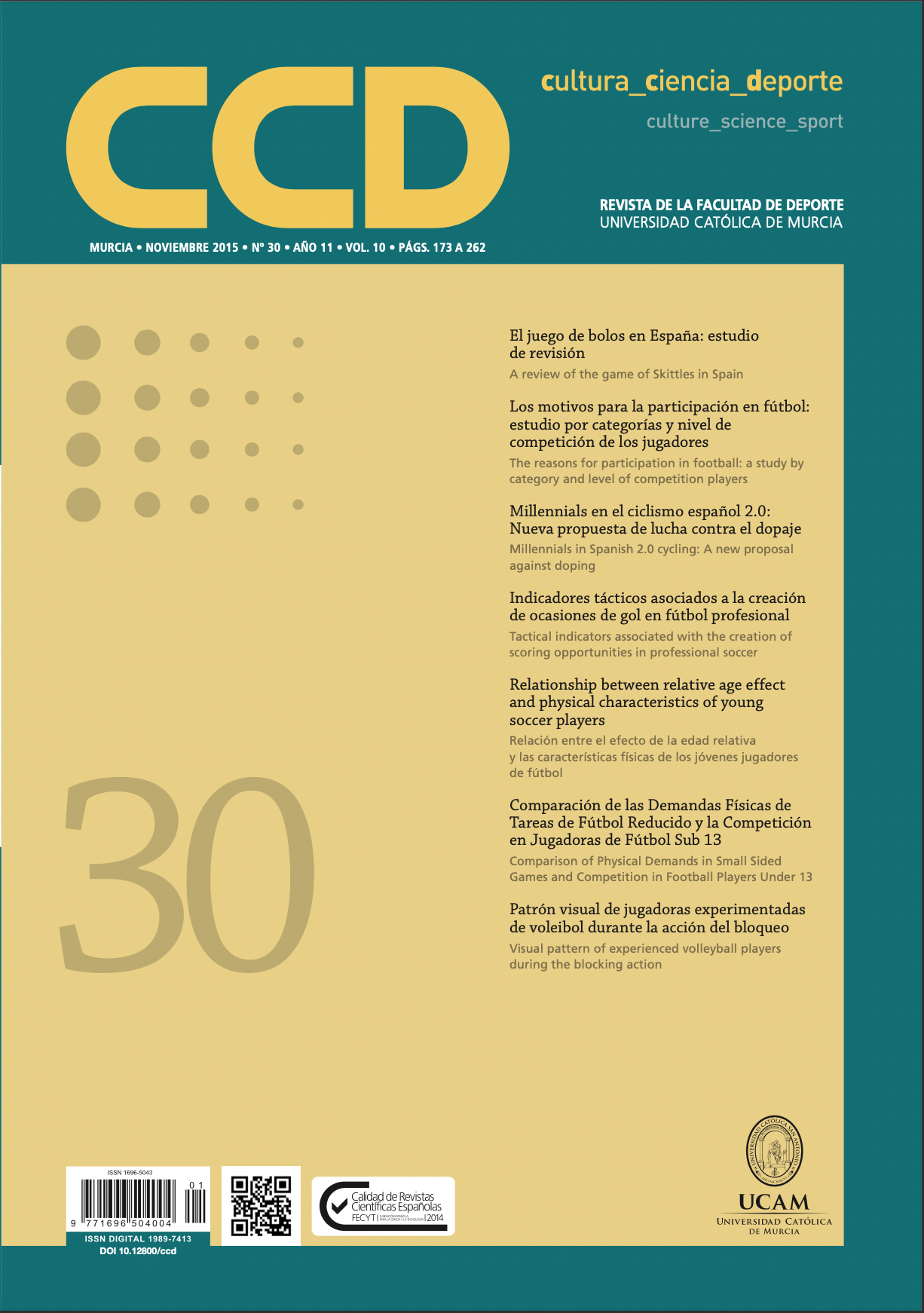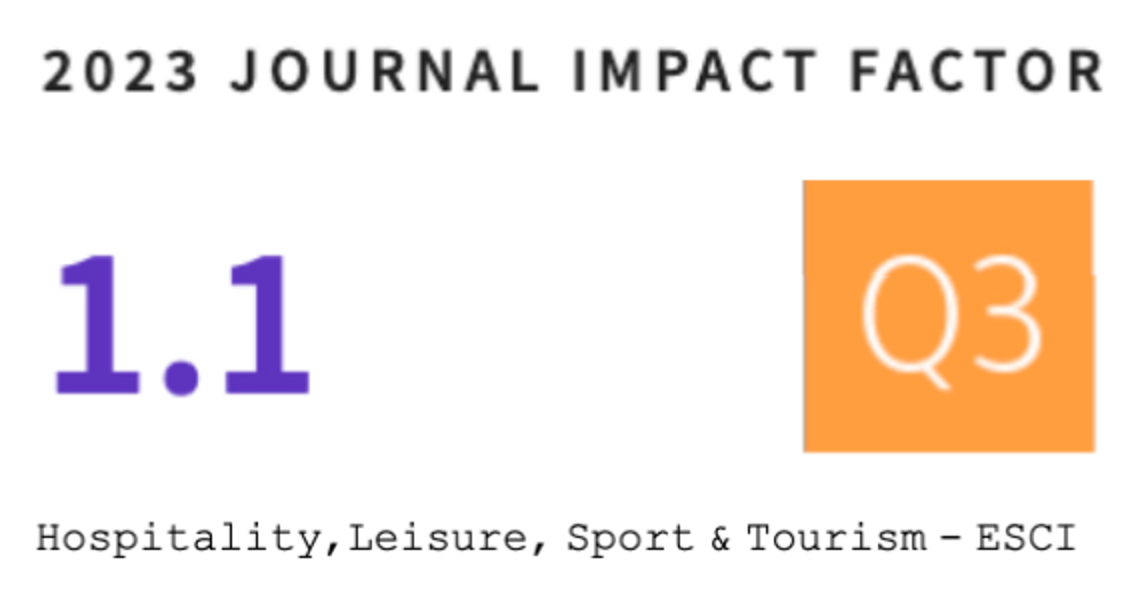Indicadores tácticos asociados a la creación de ocasiones de gol en fútbol profesional. (Tactical indicators associated with the creation of scoring opportunities in professional soccer).
DOI:
https://doi.org/10.12800/ccd.v10i30.590Abstract
http://dx.doi.org/10.12800/ccd.v10i30.590
El objetivo de este estudio fue describir cómo son creadas las ocasiones de gol en fútbol profesional, teniendo en cuenta indicadores tácticos ofensivos y la posición del equipo rival. 335 posesiones finalizadas en ocasión de gol durante los 16 partidos de fase eliminatoria del Mundial de futbol 2010 fueron analizadas. De cada posesión, 15 dimensiones tácticas fueron evaluadas mediante metodología observacional usando el instrumento REOFUT. El 61,2% de las ocasiones de gol fueron creadas por ataque organizado, el 18,8% a través de contraataque y el 20,0% mediante acción a balón parado. El ataque organizado se caracterizó por iniciarse en zonas no invasivas del rival (63,4%), con acción inicial no penetrante (62,4%) y usando 4 o más pases (62,0%). El contraataque se inició en zonas invasivas del rival (71,4%) con acción inicial penetrante (76,2%) y usando 3 o menos pases (67,8%). Las ocasiones de gol producidas por contraataques tuvieron lugar en sub-espacios más invasivos (p = 0.023) que aquellas producidas por el ataque organizado aunque para ambos la Zona Retrasada Rival fue donde más ocasiones de gol se produjeron
(42,9% vs 36,1%, respectivamente). En las acciones a balón parado destacaron los saques de esquina (49,3%) y el tiro libre (44,3%). Indicadores tácticos como el tipo de ataque, el nivel de invasión sobre el rival, la penetración inicial y el número de pases deberían tenerse en cuenta en el análisis y entrenamiento del desarrollo de las posesiones en fútbol. Además, la zona retrasada rival es clave para la culminación de ocasiones de gol en fútbol profesional.
Palabras clave: Rendimiento ofensivo, análisis táctico, estrategia, competición, análisis notacional.
===
Abstract
The aim of this study was to describe how scoring opportunities emerge in professional soccer, taking into account offensive tactical indicators and the position of the opposing team. 335 team possessions that lead to scoring opportunities during the 16 matches corresponding to the knockout rounds of the soccer World Cup 2010 were analyzed. From each possession, 15 tactical dimensions were evaluated by means of observational methodology by using the REOFUT instrument. The results indicate that 61.2% of scoring opportunities were created by organized attack, 18.8% through counterattack and 20.0% by means of set play. Organized attack started in opponent non-invasion zones (63.4%), performing a non-penetrative action (76.2%) and making 4 or more passes (62.0%). Counterattack started in opponent invasion zones (71.4%) performing a penetrative action (76.2%) and making 3 or less passes (67.8%). Scoring opportunities produced by means of counterattack took place in more invasive zones (p = 0.023) than those produced by organized attack, although for both of them the Opponent Back Zone was where more scoring opportunities were produced (42.9% vs. 36.1%, respectively). In set plays it was highlighted corner kicks (49.3%) and free kicks (44.3%). Tactical indicators such as the type of attack, the level of opponent invasion, the initial penetration and pass number should be taken into account for the analysis and training of the possession development in soccer. Besides this, the opponent back zone is critical for the culmination of the scoring opportunities in professional soccer.
Key words: Offensive performance, match analysis, strategy, competition, notational analysis.
Downloads
How to Cite
Issue
Section
License
The authors who publish in this journal agree with the following terms:
- The authors retain the copyright and guarantee the journal the right to be the first publication of the work as well as licensed under a Creative Commons Attribution License that allows others to share the work with recognition of the authorship of the work and the initial publication in this journal.














